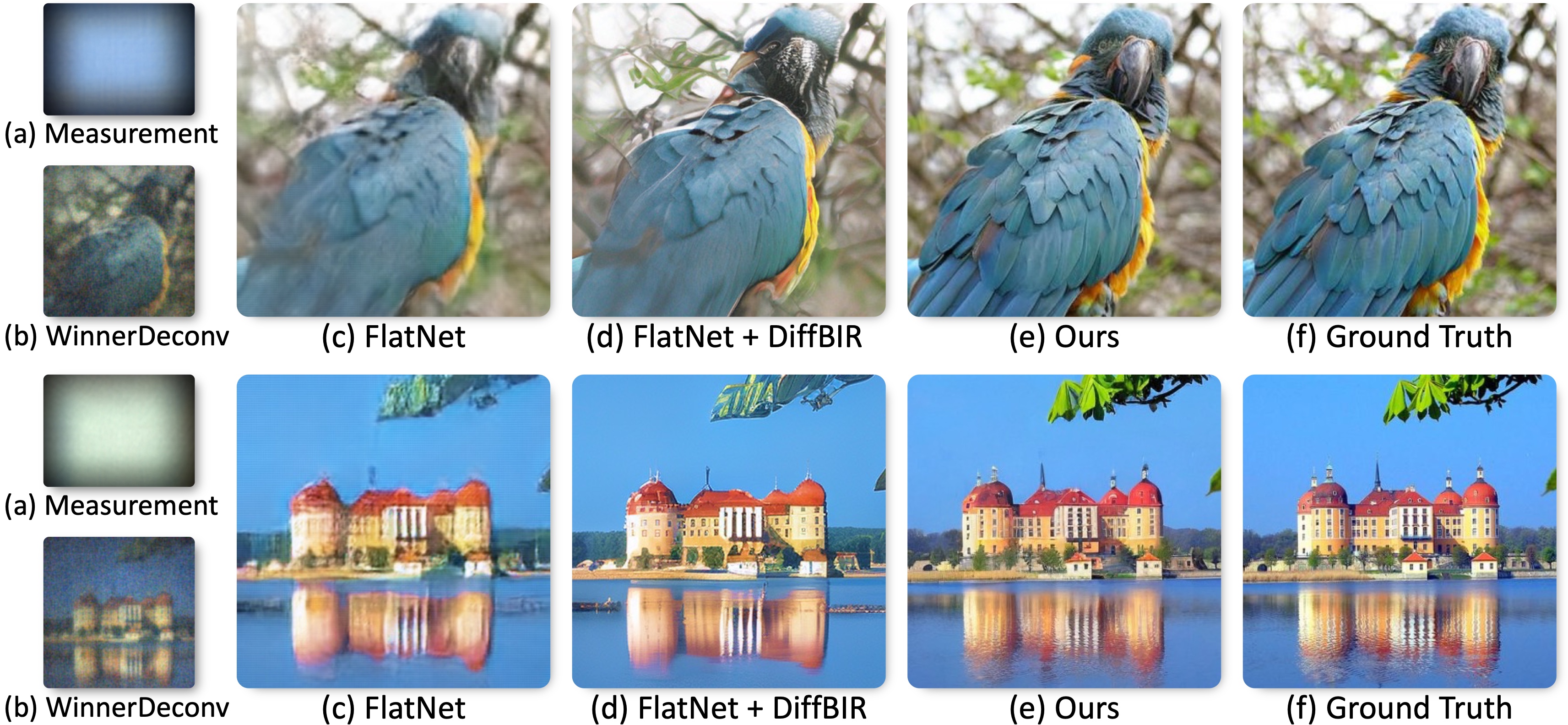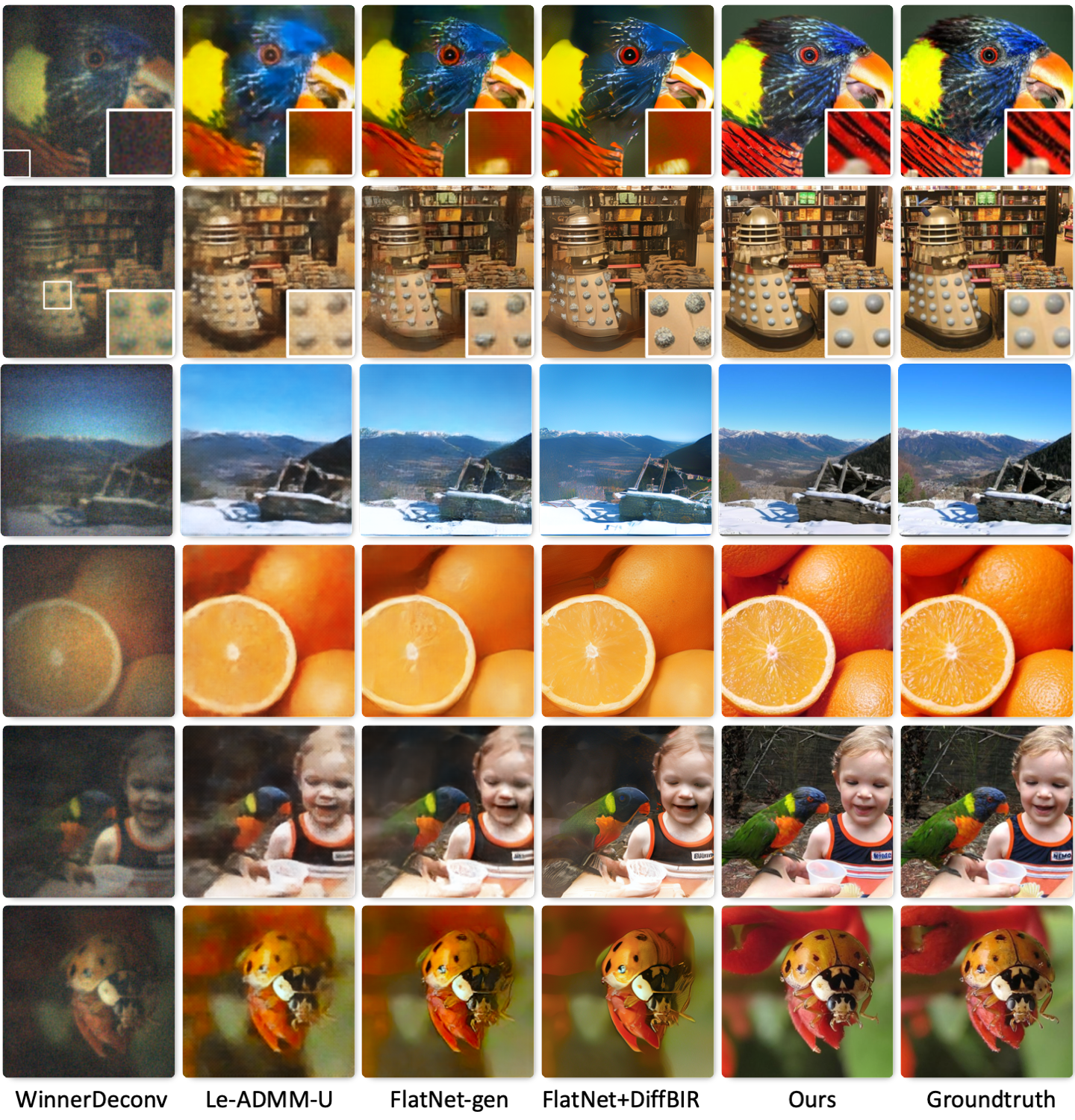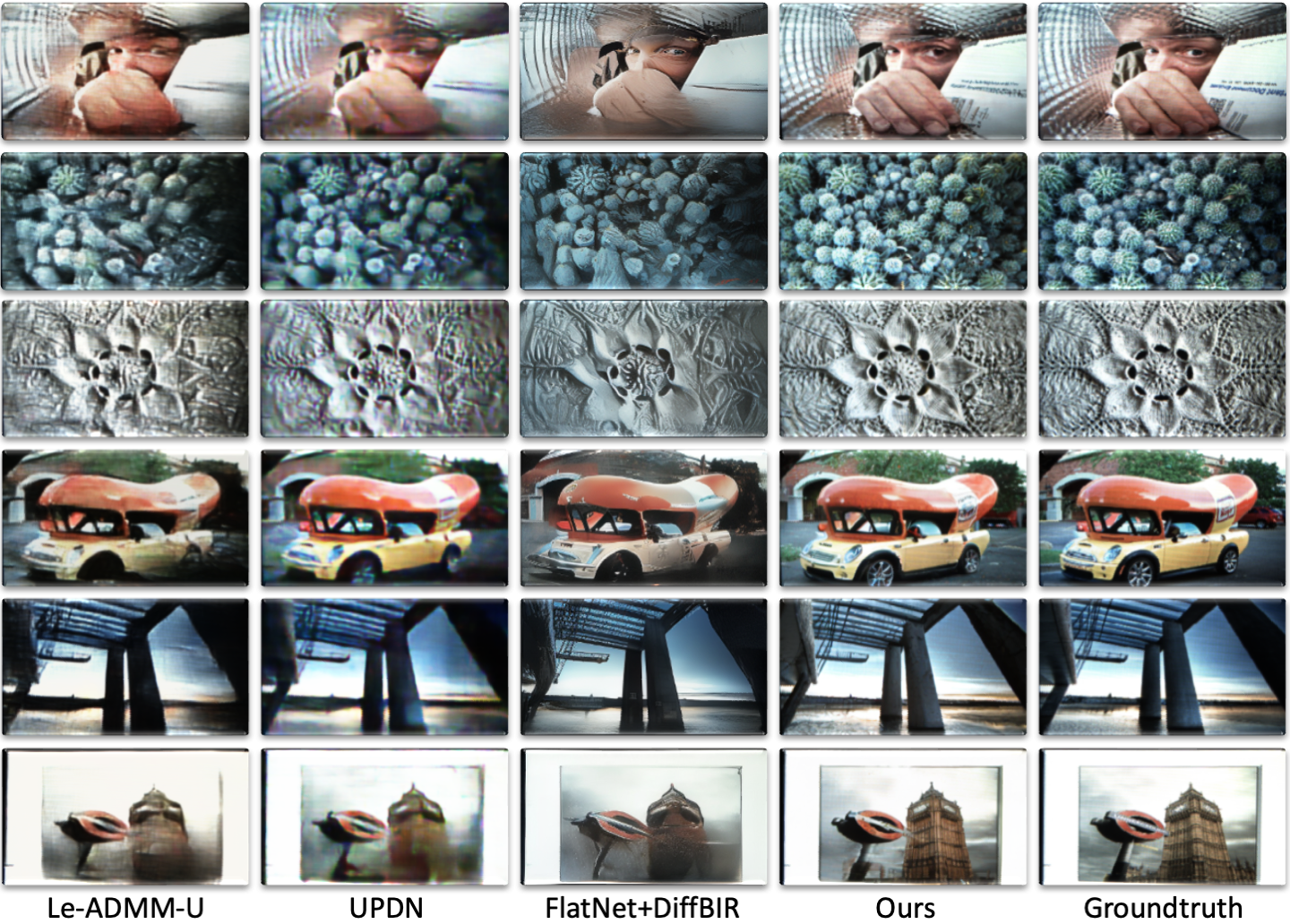Comparison of lensless imaging approaches

We introduce PhoCoLens, a lensless reconstruction algorithm that achieves both better visual quality and consistency to the ground truth than existing methods. Our method recovers more details compared to traditional reconstruction algorithms (b) and (c), and also maintains better fidelity to the ground truth compared to the generative approach (d).



